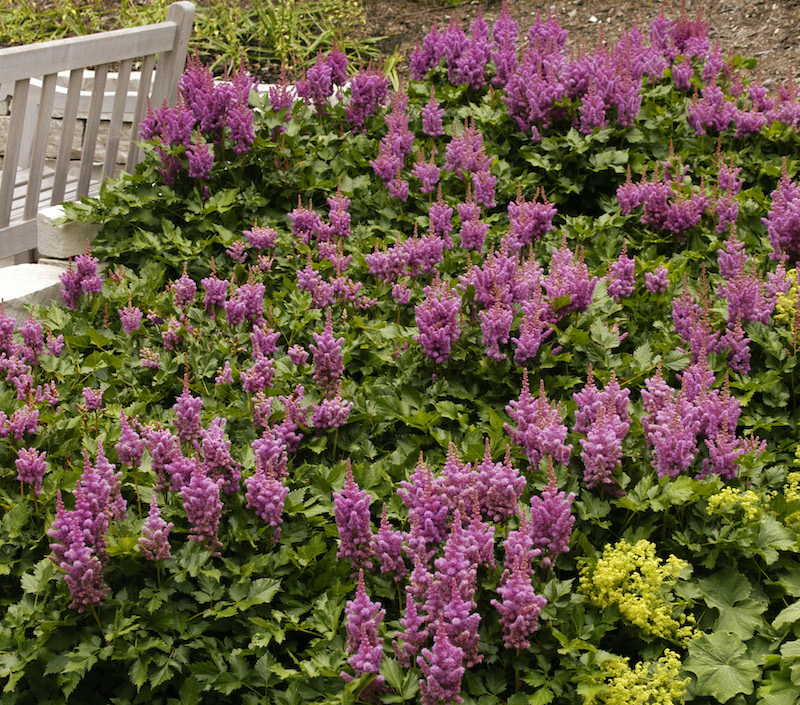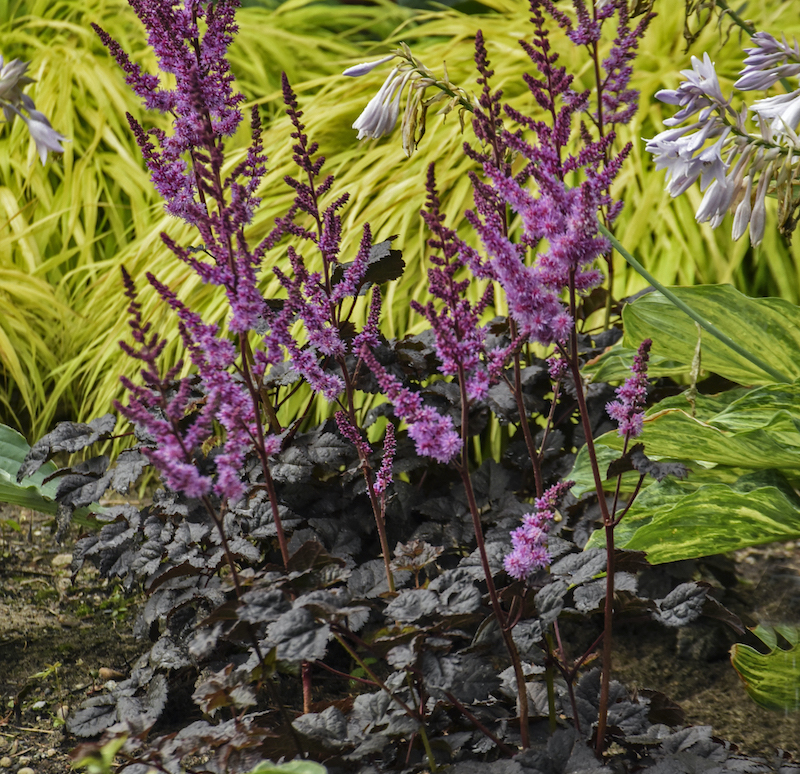Astilbes are herbaceous perennials that are native to mountain ravines and woodlands in Asia as well as regions in North America. Other common names include False Goatsbeard and False Spirea. This plant can bloom in an array of colors such as white, pink, peach, red, lavender, and violet. Its tall, puffy plumes stand out against its fern-like foliage. This perennial is a great option as a companion plant for other plants that can grow in the shade.
This perennial requires a minimal amount of maintenance. However, planting it the correct way is essential for growing a strong, healthy plant.

What You Need To Plant Astilbe
- Shovel
- Compost
- Garden spade
- Area with partial shade
- Water source
- Mulch
Where to Plant Astilbe
Astilbe grows best in 4 to 6 hours of direct sunlight per day. It will benefit from light to moderate shade, especially during the hot summer months. This perennial will flourish in moist, well-drained soil with a slightly acidic pH level of about 6. Dig a hole that is approximately 4 to 6 inches deep and about twice the width of the plant. Spread the roots out gently and ensure they are pointing down. Adding a layer of mulch will help to maintain adequate moisture levels.
Astilbe Spacing
Astilbe should be spaced no closer than 18 to 24 inches apart. These perennials look the most attractive when grouped with at least 3 plants of a similar color. Because astilbe grows at a fairly rapid rate when in ideal conditions, it’s important to divide them every 3 or 4 years to ensure they stay within bounds. Upon reaching maturity, your astilbe may reach a height between 24 and 30 inches and a width of 18 to 30 inches.

Steps To Plant Astilbe
Before bringing home a new astilbe, make sure you have a planting position that will provide an adequate amount of sun and shade. Choose a site with moist, well-draining soil. Dig a hole between 4 and 6 inches deep. The hole’s width should be twice that of the astilbe.
When planting, carefully spread out the roots and have them facing downward. The crown of the astilbe should be approximately 1 inch beneath the soil’s surface. Make sure to fill in all areas with soil and pat it down gently so it stays in its place. Add a layer of compost around the root zone of the plant to lock in moisture.
Water your perennial generously after you’re done planting it. This plant requires a lot of water and must be watered deeply at least once per week. During high temperatures, you may need to water it more frequently. However, don’t let the soil get soggy as this can lead to root rot. Be careful with overwatering.
You can apply fresh organic mulch during springtime to help your astilbe retain moisture and reduce the chances of unwanted weed growth.
Step 1 - Pick a favorable area for your perennial
Step 2 - Dig a hole with the measurements mentioned above
Step 3 - Mix in compost to aid with the plant’s growth
Step 4 - Plant and ensure the crown is 1 inch beneath the surface of the soil
Step 5 - Fill in all areas with soil and pat down gently
Step 6 - Water it generously after planting
Step 7 - Add organic mulch to help with moisture retention
When to Plant Astilbe
The best time of year to plant your astilbe will be during either the spring or autumn season. Do not plant it during summer as your plant will be at higher risk of drying out. If you plant on a hotter day, consider adding a greater amount of water to ensure it gets the moisture it needs to settle in.

Transplanting Astilbe
The best time to transplant astilbe is during the wintertime after its foliage has dried. Make sure to divide your plants every 3 to 4 years. Before moving your perennial, water it so the soil is fully drenched. This step is vital as it will make it easier for the roots to loosen and reduce the risk of harming the plant in the process.
Dig holes that are roughly 8 inches deep and about the same width as your astilbe’s root ball. Very carefully dig out the root ball with a garden spade, doing so a few inches away from your perennial. If you notice resistance when pulling out the plant, stop immediately and use the spade to loosen the soil until your perennial is easy to pull out.
Replant quickly and press the soil around the perennial’s base. You may water your astilbe once again and utilize mulch to keep the soil moist.
 |
Author Chris Link - Published 07-06-2022 |
